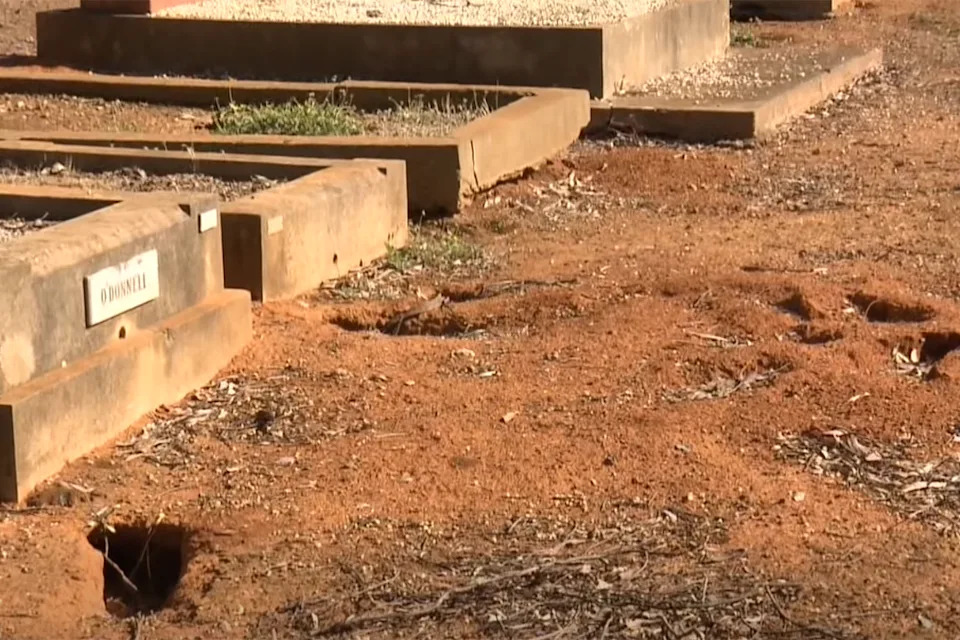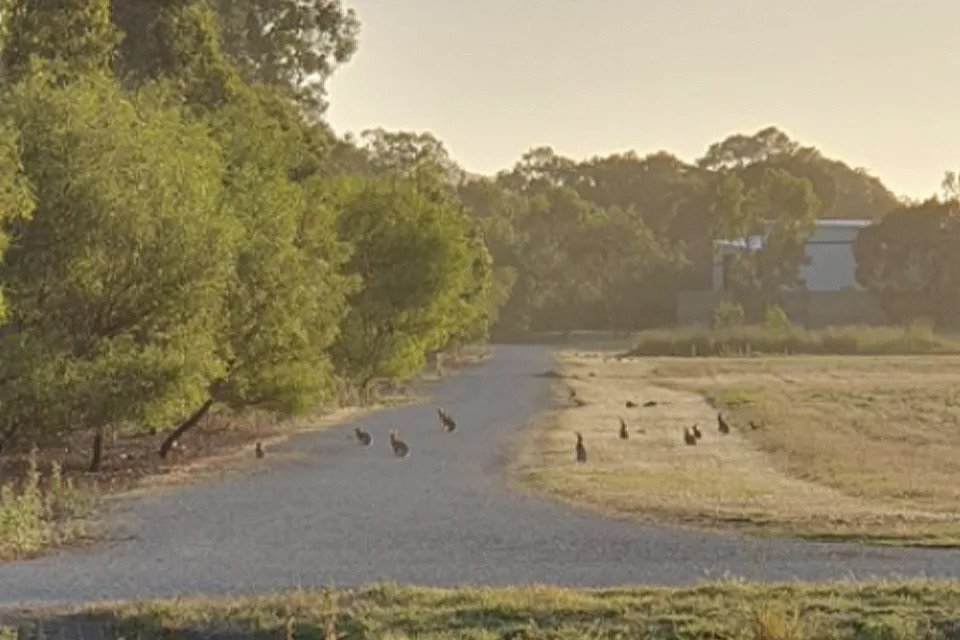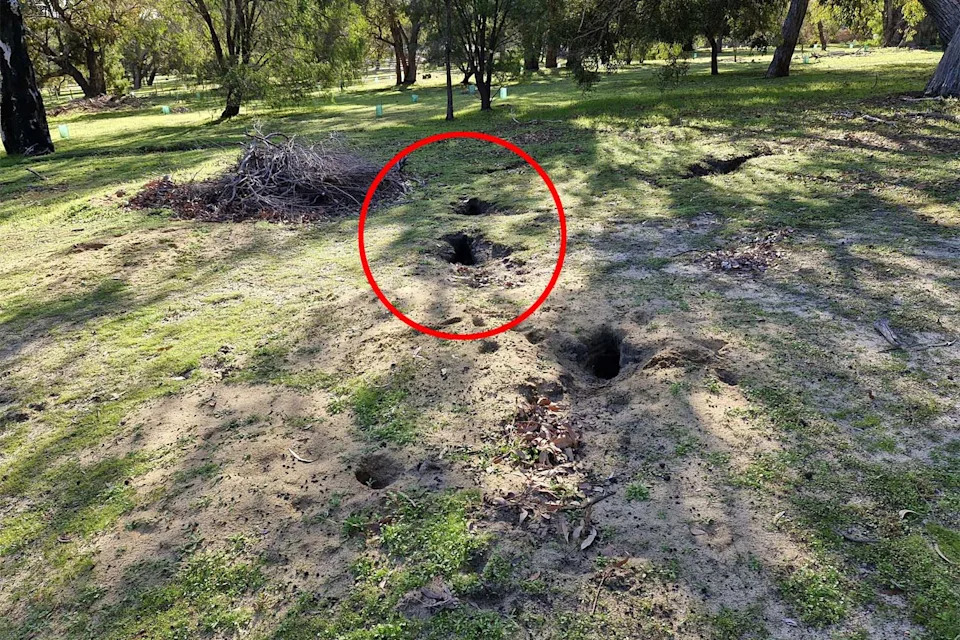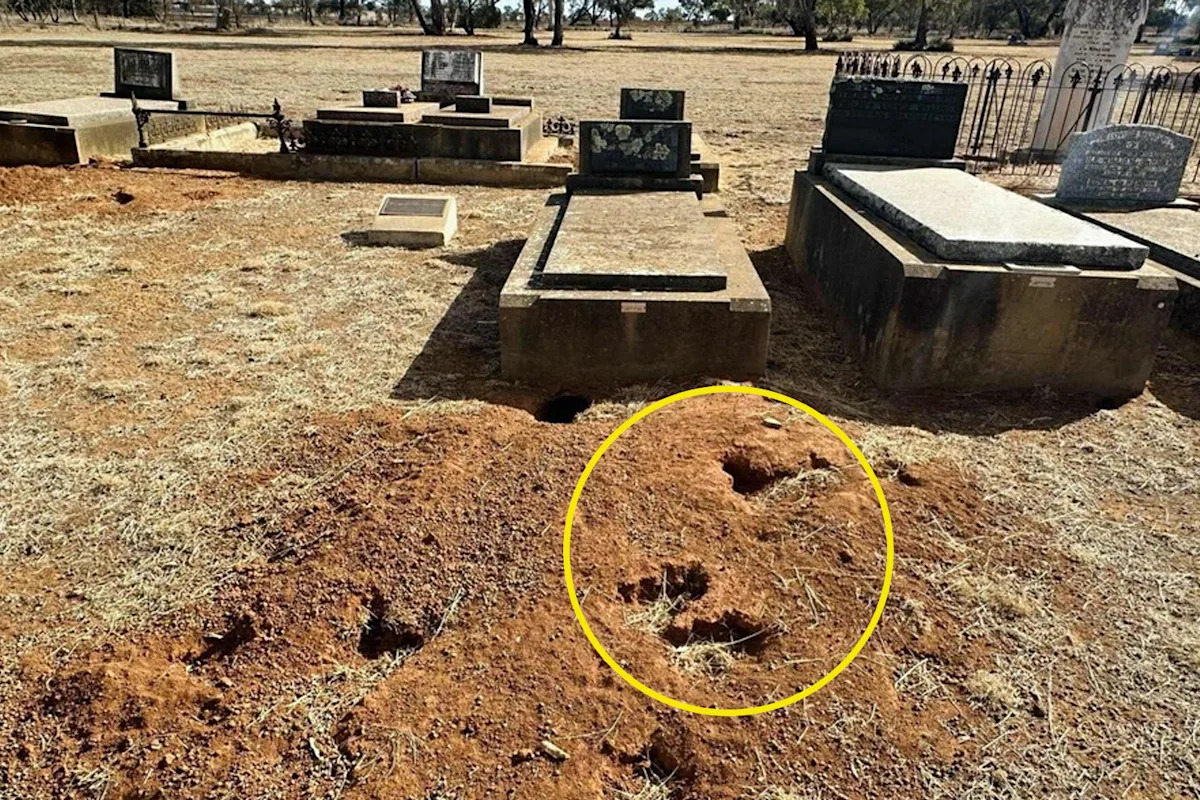Authorities are encouraging a multi-level response to one of the country’s most desperate ecological threats. They say all residents have a role to play in the fight, amid heartbreaking reports that cemeteries are being ravaged.
Like much of Australia, New South Wales is home to widespread populations of feral rabbits.
Managing feral rabbits costs the country $200 million annually, and containment is especially difficult in NSW because of its extensive agricultural areas.
In the Riverina region, the infestation is spreading, and public frustration is mounting as once-sacred sites are overrun and reduced to warrens.
At the Junee and Old Junee cemeteries, rabbits are not only running wild, they’re burrowing through graves, some dating back to as recent as 2015.
The NSW Local Land Services told Yahoo News that cemeteries are uniquely exposed to wild rabbits as they can easily dig through the turned soil.
It acknowledged the problem at Junee and called for all land managers to work together on “sustained, targeted control using multiple methods”, such as baiting, shooting and warren destruction.

The Old Junee Cemetery has copped the brunt, but the invasive species impact is widespread across the entire region. Source: 7NEWS
Residents heartbroken as rabbits ravage graves
LLS Biosecurity Officer Savannah Kelly said wetter periods in recent years have likely fuelled a rise in rabbit numbers in the Riverina, offering plentiful feed and cover.
“The region has also seen a shift in historical land use from sheep grazing to cropping, which means there is more high-protein feed available throughout the year, further helping rabbits to breed,” she said.
And breed they have.
Locals warn that despite ongoing containment efforts — including more than 15,000 kilograms of baited carrots deployed across the three LGAS, with calicivirus (RHDV‑K5) released at 10 separate sites — their numbers have only grown.
For residents with loved ones kept in Junee’s cemeteries, rabbits’ ongoing impact on plots has been “upsetting” to see.
“It’s heartbreaking. The burrows are everywhere, not just beside graves, but right into them. It’s so upsetting and honestly just disrespectful,” one resident told the Junee Bulletin.
“If that was your child, partner or your parent buried there, you would be horrified to see it. These are sacred places. These aren’t 100-year-old forgotten plots, some of them are only a few decades old.”

Rabbits were first introduced to Australia for hunting purposes in the 1800s. They now cost the economy hundreds of millions per year. Source: The Adelaide Advertiser
The LLS is the lead agency responsible for invasive species in the region.
It said it has developed a draft Rabbit Response Alliance management plan, which will help guide coordinated control efforts, including in Junee.
“Riverina LLS is working closely with Junee, Temora and Coolamon councils, as well as other public and private land managers, to help manage wild rabbits [in the area],” Kelly said.
But, there is “no silver bullet” regarding containment efforts as rabbits breed rapidly and move freely across property boundaries, she warned.
According to residents, infestations are extending past the cemeteries, with rabbits moving from wetlands, rail corridors, and crown land into homes and streets. “The problem isn’t just in our cemeteries or on farms anymore, it’s at our doorsteps,” another resident said.
“We need something done within the Junee township,” said another. “They’re chewing plants, digging trenches under fences. We’re filling in holes every week.”
Why were rabbits brought here, and why are they so destructive?
Rabbits are one of Australia’s most infamous invasive species, causing widespread ecological and economic damage since their introduction in the 19th century.
They are also a significant economic and environmental challenge in Australia, with their impact estimated at over $200 million annually.
First brought to the country in 1859 in Victoria, primarily for sport hunting, rabbits quickly established breeding populations in the wild.
Their rapid reproduction and adaptability allowed them to spread across much of the continent within a few decades.

Wild rabbits compete with native wildlife for food and shelter, cause soil erosion and overgraze native plants and crops. Source: Peel Harvey Biosecurity Group
The environmental impacts of rabbits are severe. They compete with native animals for food, destroy vegetation, and contribute to soil erosion, which in turn degrades habitats and threatens biodiversity.
Crops and pastures are heavily affected, causing significant economic losses for farmers, and their burrowing habits can damage infrastructure such as fences and irrigation systems.
Rabbits have played a major role in the decline of several native plant and animal species, making them a long-standing conservation concern.
Over the years, Australia has implemented various control measures, including poisoning, shooting, warren destruction, and biological controls like the myxoma virus and calicivirus (RHDV).
While these efforts have temporarily reduced populations in some areas, complete eradication has proven impossible due to rabbits’ high reproductive rate and widespread distribution.
As a result, modern management strategies focus on reducing environmental and agricultural impacts rather than attempting total eradication, aiming to keep populations at levels that are sustainable for both the land and human use.
Love Australia’s weird and wonderful environment? 🐊🦘😳 Get our new newsletter showcasing the week’s best stories.


